Budget-Friendly Kids Room Organization: Creative Storage And Decluttering Tips
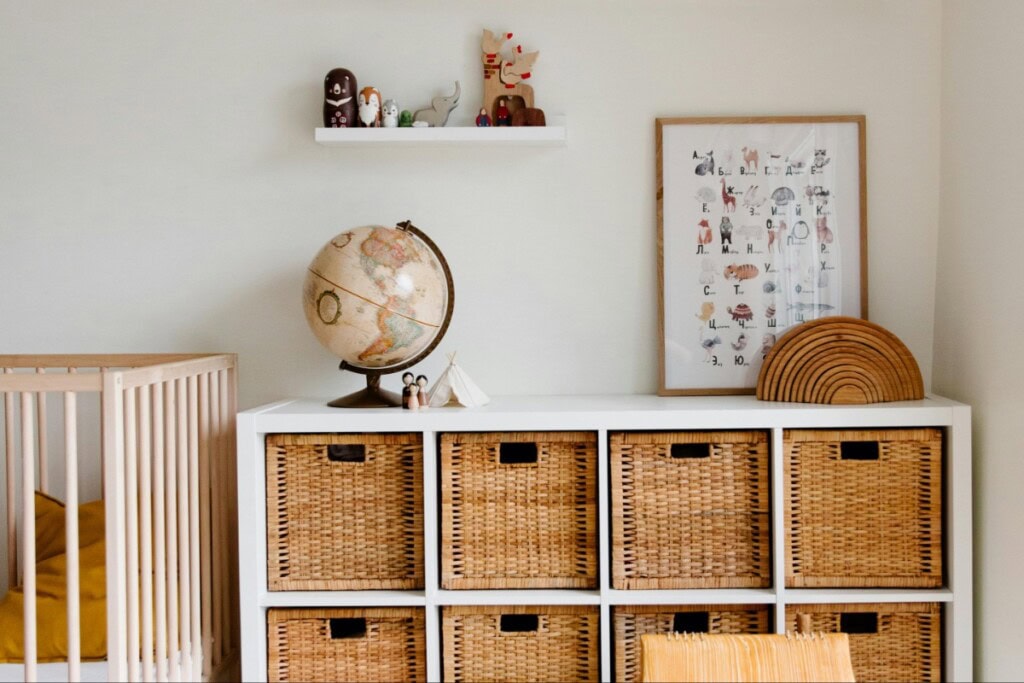
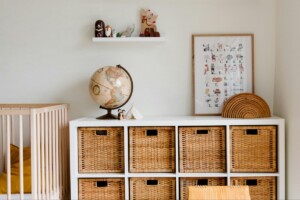
The whirlwind of toys, art supplies, and ever-growing collections can quickly transform a child’s bedroom from a sanctuary into a chaotic zone. If you’re a parent, you know the struggle: the constant battle against clutter feels never-ending.
But creating an organized and peaceful space for your kids doesn’t have to break the bank. This article dives into budget-friendly and creative solutions that prove you don’t need a fortune to achieve a tidy and functional kids’ room. We’ll explore innovative DIY storage ideas, clever decluttering strategies, and upcycling techniques that transform everyday items into organizational wonders.
Beyond aesthetics, an organized space offers significant benefits for children. A clutter-free environment reduces stress, fosters a sense of calm, and encourages creativity by allowing kids to focus on play and learning without distractions. So whether you want to spruce up your playroom to include a learning corner in Dallas, TX, want to create a new space in Charlotte, NC, or upgrade your nursery to a space for an active toddler in Garden City, NY. Let’s discover how to create a space where both you and your child can thrive, all while staying within your budget.
Decluttering: The foundation of the organization
The foundation of any organized kids’ room starts with decluttering. Before investing in any storage solutions, take a critical look at the existing belongings. The mantra “buy less toys” rings true – minimizing the influx of new items is key to managing clutter. Prioritize what your child truly uses and loves, and consider implementing the “too small” basket method for clothing and toys that are no longer suitable. This simple technique creates an ongoing system for easy decluttering, preventing items from piling up.
“The most inexpensive tip for organizing your child’s bedroom or playroom is to buy fewer toys. Just like adults, children become stressed and overwhelmed when their spaces are cluttered. Re-allocate those funds to experiences, and only keep toys that they use regularly and love.” – Brittany Rodriguez, owner of B. Beautifully Organized
“Declutter first. This is always the first step to organizing any project is to declutter first. The good news is that it doesn’t cost any money to do this. Once you let go of all the things you don’t need or use anymore, it will be much easier to organize everything that remains.
Look around your home for items that can be repurposed as storage solutions. Shoe boxes, mason jars, baskets, and plastic bins can all be used to organize toys, books, and clothes.” – Malka Rodal with The Organized Fairy
Decluttering isn’t just about removing excess; it’s about creating space for the things that matter. By carefully curating your child’s belongings, you ensure that their room becomes a functional and enjoyable space. This process allows you to identify what storage solutions are truly needed, preventing unnecessary purchases. A decluttered room allows children to better focus on their play and creative activities, fostering a more peaceful and productive environment.
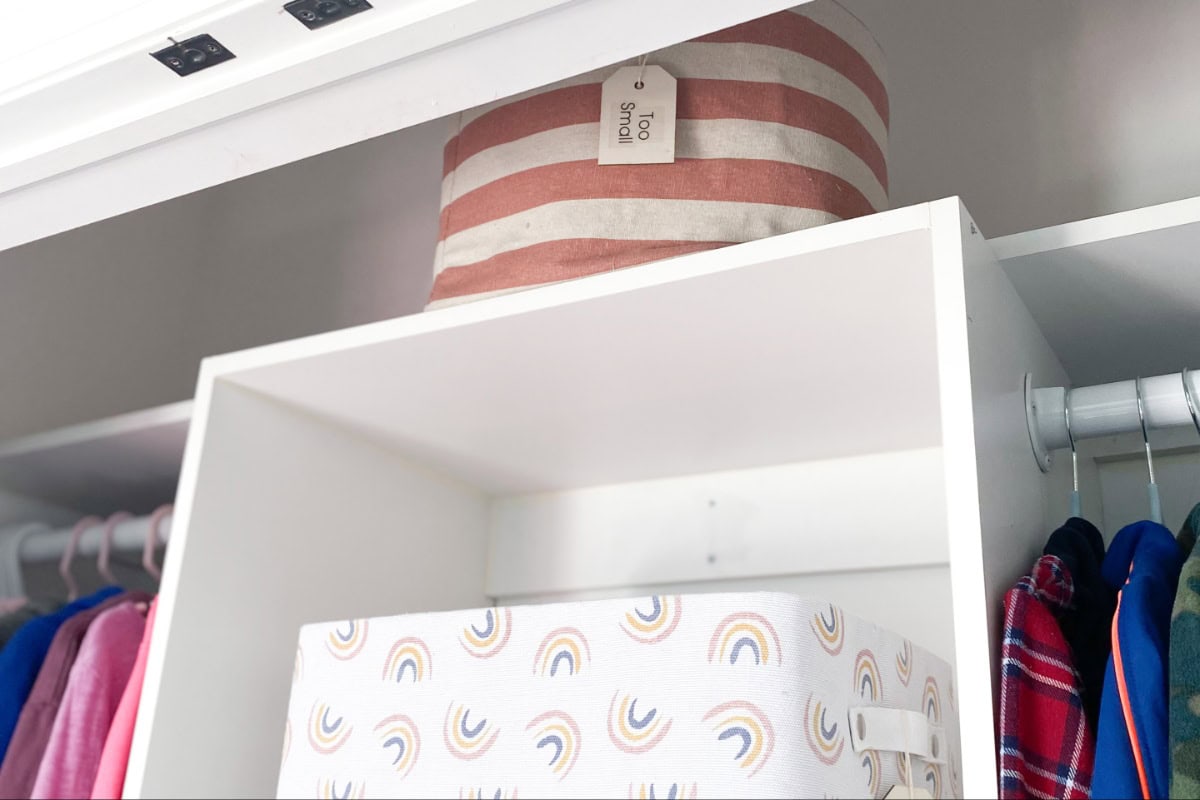
“Create a ‘too small’ basket. Whenever they outgrow something, just toss it in there. It keeps things tidy and makes decluttering a breeze. You can use any bin or basket that you already have.” – Mary Ann with Find Your Gold
“Hands down, the most budget-friendly way to organize your child’s room is to declutter first. Once you know what things you will keep, you can use cardboard boxes covered with paint or contact paper to organize clothing items or cut them down to create drawer organizers. Empty tissue boxes or glass jars can organize smaller items like hair accessories or socks. Involve your child in the process by letting them paint and decorate plastic food containers to store their treasures. And of course, don’t forget to check local thrift stores or Buy Nothing groups for affordable organizing solutions.” – Andrea with the Simplifying Mom Life
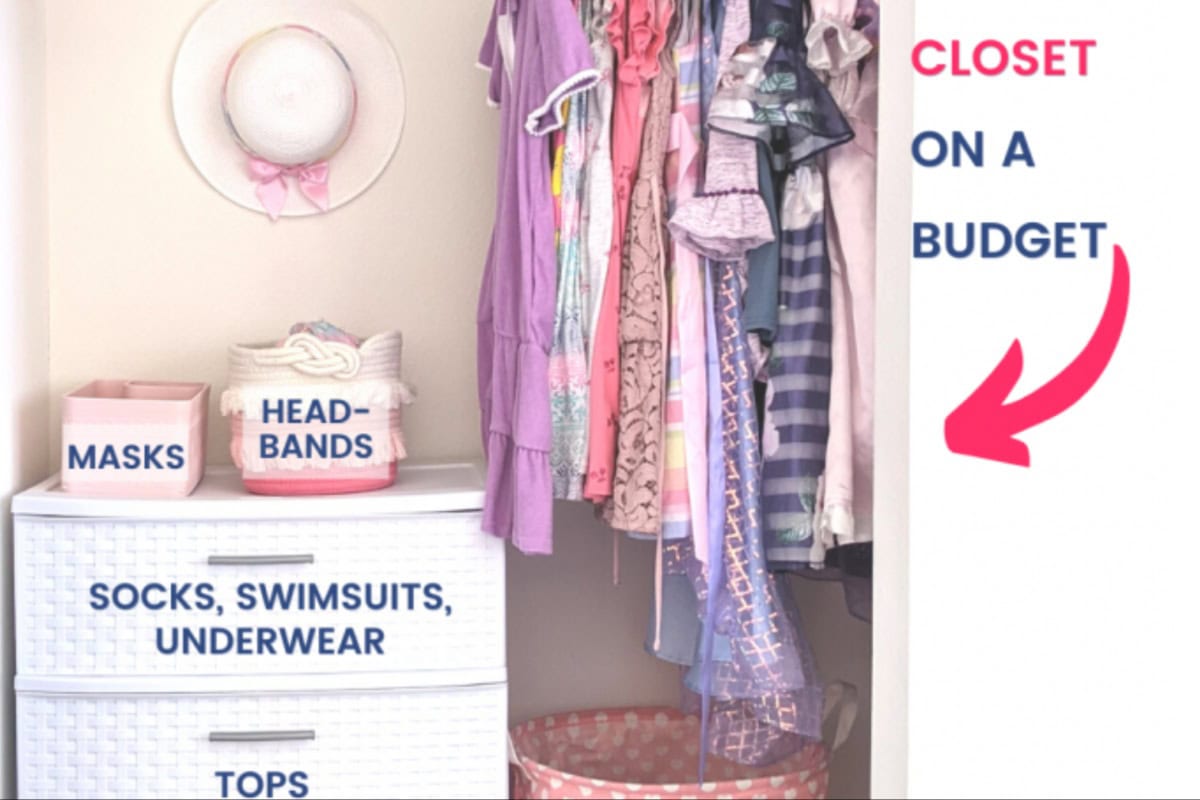
Beyond simply tidying up, decluttering can also instill valuable life lessons. Introduce the “donation box” concept to encourage a sense of giving and responsibility. By involving your child in the process of selecting items to donate, you teach them the importance of sharing and helping others. This not only lightens the load in their room but also cultivates empathy and generosity.
Prioritizing safety
In addition to fostering interaction, safety considerations are very important in any child’s room design. All furniture should be stable and securely anchored to prevent tipping, and any sharp edges should be padded or avoided altogether. Electrical outlets should be covered, and potential choking hazards, such as small parts, should be kept out of reach. By prioritizing safety, parents can create a secure environment where children can play and interact freely.
“Safety and organization go hand in hand. Use soft, labeled fabric bins to store toys and essentials — avoiding hard plastic or heavy containers that can tip over. Secure bookshelves and dressers to the wall to prevent accidents, and use childproof latches on storage drawers to keep little explorers from accessing unsafe items. A simple over-the-door shoe organizer can also double as a safe, out-of-reach storage solution for smaller toys and baby care products. Keeping things neat not only saves space but helps ensure a worry-free play area.”- Danny A, founder and CEO of Baby Proof Me
Creative and budget-friendly storage solutions
The first step to organizing is finding places to store stuff around the kids room, even if you have to get creative.
Upcycling and repurposing
Unleashing creativity is key to achieving a well-organized kids’ room without breaking the bank. Upcycling and repurposing everyday items offers a fantastic avenue for crafting unique and functional storage solutions. Instead of discarding seemingly useless items, consider their potential for transformation. Old shoe boxes, cereal boxes, and even food containers can be given a new lease on life as organizers for toys, art supplies, and small accessories. This not only saves money but also promotes sustainability, teaching children the value of resourcefulness.
The possibilities for repurposing are vast. Consider transforming dresser drawers into under-bed storage by adding wheels, or using a spice rack mounted on the wall to display small toys and books. Even seemingly mundane items like mason jars and makeup bags can be repurposed to neatly hold art supplies and tiny treasures. By looking at household items with a fresh perspective, you can discover hidden potential for creating customized storage that perfectly suits your child’s needs.
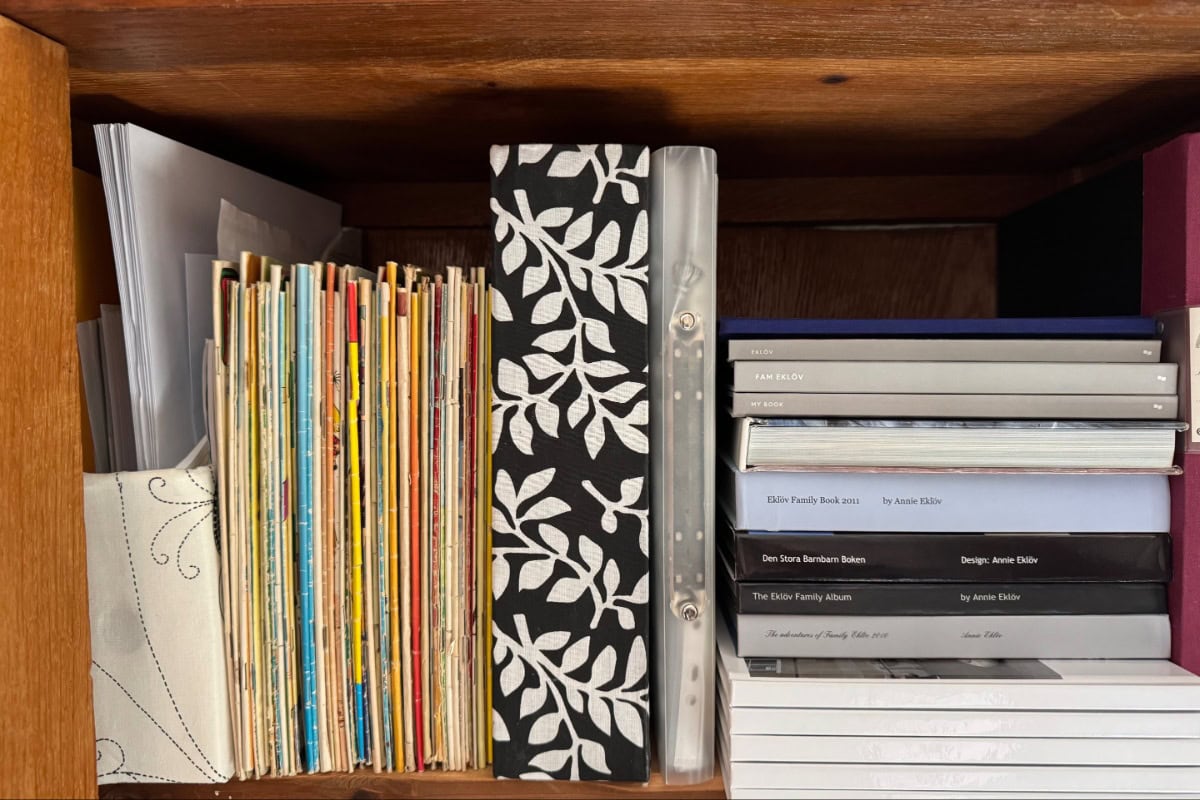
“You don’t want to spend loads of money on storage solutions when you plan to move in the future, yet as all moms know, feeling like your home doesn’t function isn’t something you want to live with either. Decoupage and wallpaper offcuts became my best friends as I endeavored to fix my home on a shoestring budget. I went to work covering old shoe boxes, used office organizational items, cereal boxes, and even boxes I got for free, like the box for printer paper and banana boxes. The weaker cardboard I covered with material my grandmother gave me using decoupage paste. This strengthens the cardboard. I have been using some of these items for 18 years. The boxes with thicker cardboard I covered with wallpaper.” – Annie from The ADHD Minimalist
Beyond the practical benefits, upcycling and repurposing add a touch of personality and charm to a child’s room. Each repurposed item tells a story, making the space feel unique and personal. Involving your child in the process can also be a fun and educational activity, fostering their creativity and problem-solving skills. By embracing upcycling, you can create a clutter-free and organized space that reflects your child’s individuality, all while staying within your budget.
“When seeking creative and budget-friendly storage solutions, consider the untapped potential of everyday items. Recycled plastic take-out containers become ideal for organizing smaller trinkets and collectibles, while larger storage chests or even the sturdy boxes from online orders can be transformed into impressive toy storage through paper mache applications, incorporating various textures to stimulate sensory experiences. For a touch of quirky organization, aged books can serve as shelf dividers, color-coordinated to create a visually appealing and defined space.
To encourage artistic expression without the worry of wall damage, utilize leftover molding to frame a section of black chalk paint, creating a designated drawing zone that allows children to freely explore their creativity. If chalk paint isn’t your preference, explore alternative drawing treatments available at local paint stores, providing a unique and engaging artistic outlet.” – Ke Kai Kealoha with Aloha Chicks
Creative space solutions: DIY storage ideas
Maximizing vertical space in kids’ rooms with DIY hanging storage is a game-changer for organizations. High wall space with cupboards and shelving provides out-of-reach storage for less frequently used items, while hanging closet organizers and tension rods create accessible space for clothes.
Specialized hanging organizers are perfect for corralling dolls, cars, and books, keeping them off the floor and easily visible. Creative DIY solutions like hanging accessories with clothespins or binder clips offer a fun way to display artwork and small treasures, and hanging mesh laundry bags can double as adorable storage for stuffed animals.
“Think ‘hidden storage’ to maximize space without spending a fortune. Repurpose old dresser drawers by adding wheels and sliding them under the bed for toy storage. Use hanging closet organizers for stuffed animals, keeping them off the floor while still accessible. Egg cartons or muffin tins make perfect budget-friendly organizers for small items like Legos, hair ties, or crayons. Lastly, give your child a ‘donation box’ to encourage decluttering — anything they outgrow or don’t use can go to another child in need.
DIY hanging storage with reusable household items. Get creative with everyday household items to organize your child’s room on a budget. Repurpose an old shoe organizer by hanging it on the closet door to store dolls, toy cars, or art supplies. Use sturdy cardboard boxes wrapped in colorful paper or fabric to create stackable storage bins for books and clothes. Even an old spice rack mounted on the wall can become a perfect display for small toys or bedtime storybooks.” – Abel Dominguez, owner of Temecula Valley Junk Pick-Up
“Remember to make use of the high wall space within the kids’ bedrooms, especially for toys and equipment that they don’t need regularly. Wall cupboards from the likes of Ikea, or shelving with storage boxes on can be great, out of the way up high, for things that only have occasional use. This way you are not taking up too much floor or lower level space, that can be better used for everyday things.” – Jennifer Kay, interior designer with The Mini Interior Design Company
Think ‘dual-purpose decor’ to keep your child’s space tidy on a budget. Repurpose wooden crates as both storage and seating – just add a cushion on top for a cozy reading nook. Hanging mesh laundry bags work wonders for stuffed animals, freeing up floor space while keeping them visible and accessible. And don’t overlook tension rods. Placed inside drawers or bookshelves, they create dividers for organizing clothes, toys, or books without the need for expensive organizers.” – Amber Bowie, founder of Mackenzie Madison of Philadelphia
To further optimize vertical space, consider using adhesive hooks for items like hats, backpacks, and hair accessories. This keeps these frequently used items within reach and prevents clutter. This approach enhances organization and transforms the room into a more functional and visually appealing space. By taking advantage of wall space, you can create a tidy and efficient environment that encourages children to keep their belongings organized.
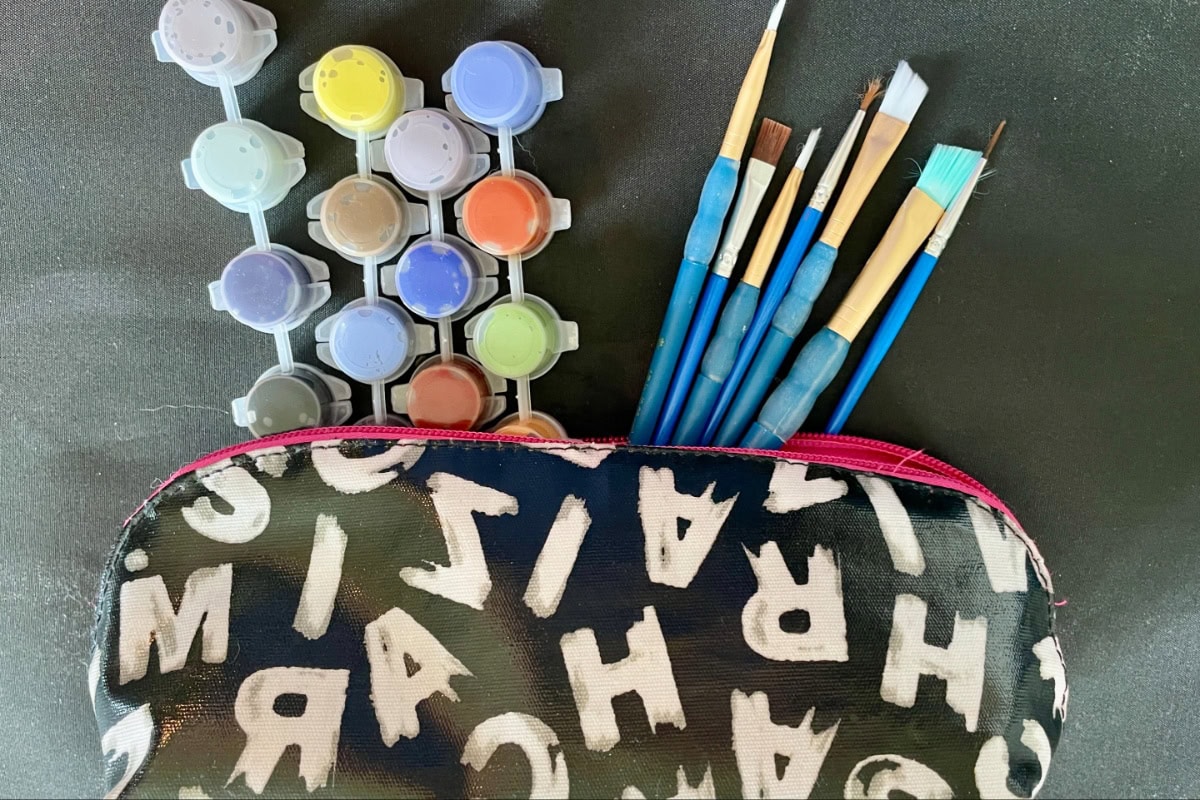
“Use jars to hold art supplies, and the jars can be decorated as well. Reuse makeup bags for art/craft supplies, Barbie accessories, Lego sets, or items to entertain your kiddo on the go. Hanging organizers, over the door or on the wall, are a great solution for dolls, cars, books, sports gear, etc. Food storage container missing its lid? Use the container in a drawer or a larger storage container to separate the smaller items.” – Sarah Kary, certified professional organizer from Mess to Blessed LLC
“One of my favorite ways to organize a room is with an old bookshelf. Add adhesive hooks to the sides for extra hanging storage (such as backpacks or hats), and use canvas or wicker bins on the bottom shelf for hidden storage for things like crayons, school artwork, etc. If you want to create a personalized touch, attach a corkboard to the side for notes and art display.” –Autum Love,fashion expert and founder of Autum Love
Hidden solutions
Effective storage in a child’s room often involves maximizing space in clever ways. Under-bed storage is a prime example, offering a hidden solution for items that aren’t used daily. This space can be utilized by repurposing dresser drawers and adding wheels for easy access or by using simple and inexpensive cardboard boxes.
Beyond simple storage, furniture can serve dual purposes. Wooden crates can function both as storage and seating, providing a place to keep toys and a spot for a child to sit. Similarly, Montessori bookshelves with built-in storage combine book displays with concealed toy storage, promoting organization and accessibility for a toddler in action. Even a DIY project, like using a kitchen countertop on an old Kallax unit, can create a functional desk and storage area.
“Rather than buying multiple storage units, opt for furniture that serves more than one purpose. Our Montessori bookshelf at Dannico, for example, not only beautifully displays books but also includes built-in storage for small toys and art supplies — perfect for small spaces. Investing in versatile furniture reduces the need for extra bins, shelves, or organizers, saving money while keeping things tidy.” – Moosa Esfahanian, founder and designer of Dannico
Art display can also be a form of organization. Rotating gallery walls for children’s artwork not only celebrates their creativity but also provides a structured way to manage and showcase their creations. Utilizing thrifted picture frames for organized art displays can elevate the presentation and keep artwork tidy. This approach not only decorates the room but also instills a sense of pride and order.
“When it comes to children’s room design, I believe that it’s important to have the child involved in the process. This is their space and most kids have very specific ideas about how they want it to look and feel. One fun way to have them share their input is with a rotating gallery wall of their art. Purchase inexpensive frames and hang them in a collection in their room. Then your little artist can help curate what goes in the frames from their favorite creations. The art can be changed out as much as their inspiration strikes.” – Dani Christine, principal designer of Dani Christine Interiors
“One unique and sustainable idea is to turn your child’s drawings that would otherwise be scattered around into a beautiful art display. Start by thrifting a variety of photo frames, no need to match, and frame their artwork to create a one-of-a-kind gallery wall. Not only does this add a personal and artistic touch to their space, but it also encourages your little one to keep exploring their creativity while keeping their masterpieces organized and beautifully showcased.” – Brownie Brown with High Fashion Thrift
For smaller items, simple bins are incredibly effective. Using plastic bins to organize specific items, such as Barbie dolls and their accessories, can make a significant difference in maintaining a tidy space. These bins are easy for children to use, encouraging them to participate in the organization process and keep their rooms neat.
“Organizing Barbie dolls in a kid’s room can feel overwhelming because there are so many parts. Sometimes we can over-organize and create systems that are too complicated for kids to keep up with. My biggest suggestion is to keep it simple and use plastic bins to organize items by type.” –Keri Snyder,co-owner of Bloom Conference, LLC
“Don’t toss that scratched shelf. I transformed an old Kallax unit into an ‘endless’ desk for my homeschooler by topping it with a budget-friendly kitchen countertop (JÄRSTORP, Countertop, white/laminate, 74×1 1/8 “).
Now, all his learning materials are neatly tucked underneath, creating a spacious and organized workspace. Additionally, it’s great for all Lego lovers and builders out there. It’s amazing what a little creativity and a countertop can do.” – Toddler In Action
Creating interaction spaces
Creating interaction spaces within kids’ rooms is also essential. Designing spaces that encourage bonding and conversation can be achieved by incorporating comfortable seating arrangements, such as bean bags or small couches, and including a central play area that invites shared activities. These spaces should be open and adaptable, allowing for various forms of play and interaction, from reading together to playing games.
“Consider designing spaces that encourage spontaneous interaction. Hidden nooks, window seats, or a backyard fire pit can become hubs for unexpected conversations and bonding moments. These informal spaces often become the heart of a multi-generational home, fostering connection in a relaxed, natural way.” –Abhishek Sorampuri, architect and founder of uni.xyz
Organization systems and tips
Effective organization systems are crucial for maintaining a tidy and functional space, especially in environments with children. Implementing clear labeling and categorization techniques allows for easy retrieval and return of items, fostering independence and responsibility. Consider using color-coded labels or picture-based systems for younger children to enhance their understanding of where things belong. Employing a consistent categorization method, such as grouping toys by type or books by genre, streamlines the tidying process and reduces clutter.
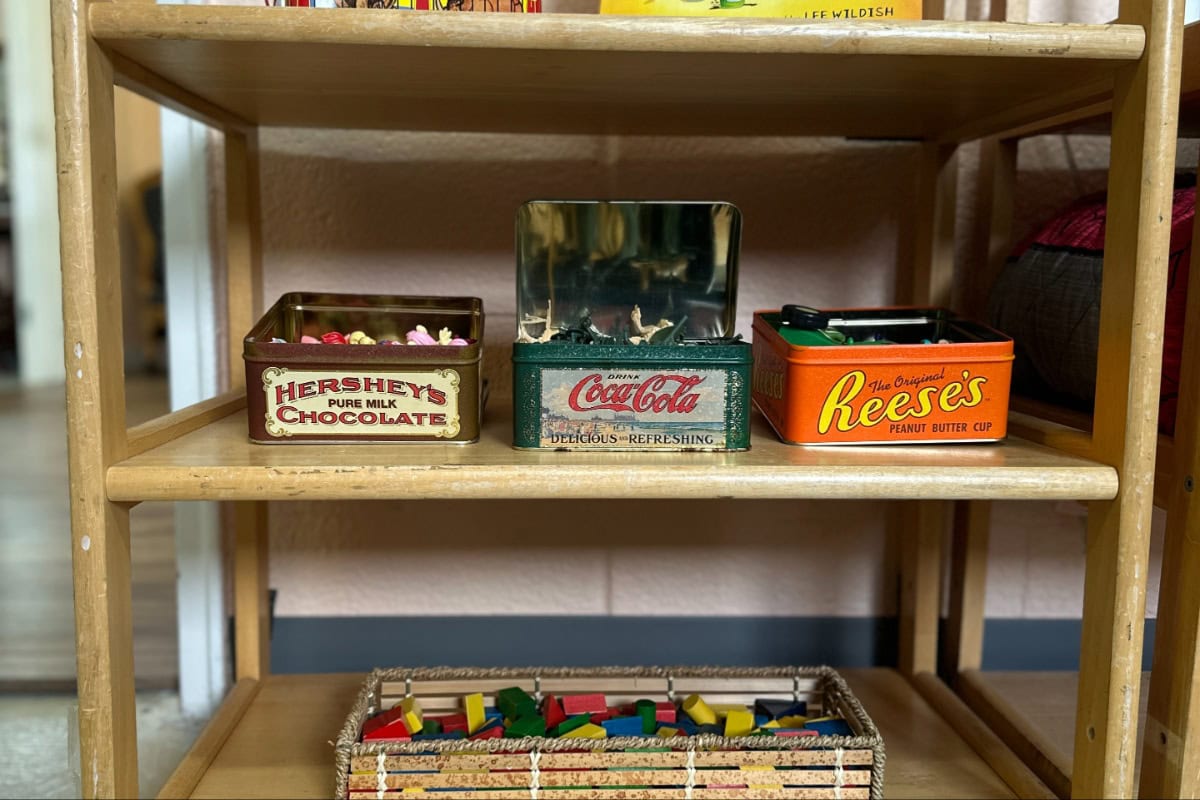
“Think creatively when it comes to organizing your child’s room without breaking the bank. Instead of tossing out old game boxes or decorative tins, give them a new life as organizers. For instance, wrap game board boxes in a colorful scarf to create a stylish toy storage solution that complements your decor. Use decorative tin cans to categorize toys by color or type. These budget-friendly ideas not only tidy up the space but also teach your child valuable organizational skills, turning their room into a personalized, clutter-free space.” – Jade Stenger with ZABS Place Thrift Boutique
Toy and book rotation is a powerful strategy to keep children engaged and prevent overwhelmed. By selectively displaying a portion of the collection and storing the rest, you can create a sense of novelty and excitement. This rotation system also minimizes clutter and allows for easier maintenance of the organized space. Regularly swapping out items keeps the environment fresh and encourages children to rediscover forgotten favorites, extending the lifespan of their toys and books.
“Take that sad, empty shoebox and give it new life as a swanky Shopkins boutique — just add cardboard shelves and colorful paper backgrounds to create the tiny store (and storage home) of your kid’s dreams. For hair accessory overload, hang a few long ribbons vertically from a wall or inside an empty picture frame, then clip bows and barrettes directly onto them. Instant glam storage that transforms glittery chaos into fancy decor.” – Sophia Whitehouse, owner and founder of Achieve Psychology
Hidden storage solutions are essential for concealing less aesthetically pleasing or frequently used items, and maintaining a clean and uncluttered appearance. Bins, baskets, and under-bed storage containers can effectively contain toys, art supplies, or seasonal items, keeping them out of sight when not in use. Opt for storage solutions that complement the room’s decor and are easily accessible for both adults and children. This combination of visible and hidden storage ensures an organized space that is both functional and visually appealing.
“Attach clothespins or binder clips to a hanger to hold Buckle Scrunchies, sunglasses, and other small accessories. This keeps everything in one place, is easy to grab, and frees up drawer space. You can hang them in the closet to keep the room tidy without adding clutter.” – Buckle Scrunchies
Sustainable organization and lasting results
Making organization fun and sustainable is the key to creating a harmonious and functional kids’ room. By employing strategies like clear labeling, strategic toy rotation, and clever hidden storage, as well as incorporating creative elements, you can transform a chaotic space into a haven of order.
The post Budget-Friendly Kids Room Organization: Creative Storage And Decluttering Tips appeared first on Redfin | Real Estate Tips for Home Buying, Selling & More.

